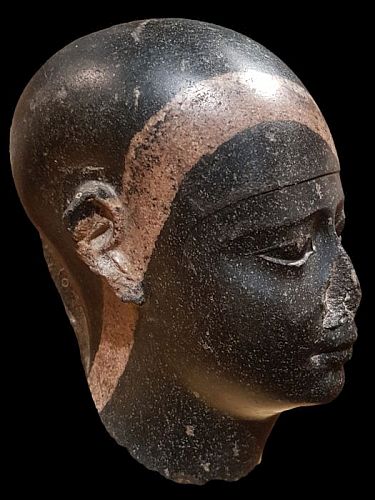RIHA Journal
About the Journal
Journal of the International Association of Research Institutes in the History of Art

The RIHA Journal was launched in 2010 by The International Association of Research Institutes in the History of Art (RIHA). It is a peer-reviewed and open access e-journal devoted to the full range of the history of art and visual culture. The RIHA Journal especially welcomes papers on topics relevant from a supra-local perspective, articles that explore artistic interconnections or cultural exchanges, or engage with important theoretical questions that are apt to animate the discipline. As a collective endeavor, the RIHA Journal seeks to share knowledge and materials issued by scholars of all nationalities, and by doing so, to make a significant contribution to dissolving the boundaries between scholarly communities. Languages of publication are English, French, German, Italian, or Spanish.
15 YEARS RIHA JOURNAL!
On April 14, 2010, the International Association of Research Institutes in the History of Art, RIHA, launched its online journal
Today, looking back to over 300 essays from all periods, regions, and media of Western art history and contemporary art, we are grateful for the support and the recognition this art history journal has received. Back in 2010, starting an online journal besides the long-established and prestigious print journals seemed to be a rather risky undertaking. However, online publishing possesses undeniable advantages. First and foremost, there is its worldwide accessibility. Furthermore, it offers authors and editors the prospect of unlimited illustrations, the possibility of linking, the appending of research data, etc. Hence, e-journals in art history have moved from a marginal phenomenon to a recognized and sought-after medium.
It was important to RIHA as an international association of – back then – over 20 research institutes in Europe, the U.S., and Australia, to develop the RIHA Journal as a platform that – despite all the necessary specialization in our discipline – offers articles across the entire spectrum and invites readers to look into fields of art history other than their own. Thus, you can find work in the RIHA Journal on Armenian sacred architecture of the 11th century next to a study of the varied artistic circle of a minister to Charles V of Habsburg in Brussels, or an article that investigates the parallel methodologies and critical reception of Le Corbusier and Portuguese contemporary Almada Negreiros. RIHA Journal special issues, on the other hand, have focused on a common theme such as the enlightening "Gottfried Lindauer – Painting New Zealand," which broke new ground in the debate on cultural transfer processes of the 19th century.
Especially in times of growing nationalisms, a broad-ranging international journal like the RIHA Journal offers the opportunity to experience the breadth of visual cultures in their diverse manifestations at the highest possible scholarly level.
We would like to thank you, dear readers, for your continued interest and openness!
To mark this 15th anniversary and to stimulate thoughts for the further development of art history in these times of simultaneous globalization and returns to nationalism, we are presenting a paper of the chair of the RIHA association, Éric de Chassey, who asks: „How to Write a More Global, More Inclusive History of Art?“
RIHA Journal 0323
Éric de Chassey: "How to Write a More Global, More Inclusive History of Art? An Ancient Egyptian Sculpture and Its Six Lessons"
DOI: https://doi.org/10.11588/riha.2025.1.110070

Unidentified sculptor, Male Head, c. 380–342 BCE (Egypt, 30th Dynasty), red and black granite, 24,1 × 14,6 × 20 cm. Virginia Museum of Fine Arts, Richmond, VA (photo: author)
Since its beginnings, art history has been torn between a tendency to remain inside local or national boundaries and a more transnational orientation; it has also veered between addressing only the creations of well-recognized white European male solitary artists and assessing the importance of female, anonymous, or collective creators of less highly prized objects-images. The long overdue process of writing art histories that are more global (less European-centered) and more inclusive (less focused on overprized masterpieces) is underway. For professional art historians, the multiplicity of narratives thus offered can be a blessing. For a more general public, though, as well as students and maybe even many professionals it still clashes with an implied master narrative that has been left barely untouched. The necessity for a new master narrative that meets the standards of contemporary scholarly research leads to pressing questions: How do we write it? Who will write it? Is it worth trying?
Just published:
RIHA Journal 0322
Cristiano Guarneri and Ines Ivić: "Books, Buildings, and Construction Techniques: The Materiality of Architectural Knowledge in the Republic of Ragusa after the Great Earthquake of 1667"
DOI: https://doi.org/10.11588/riha.2025.1.109017

Map of Dubrovnik, seventeenth century. 1 Cathedral | 2 Rector's Palace | 3 St Blaise's Church | 4 Petilovrijenci Church | 5 Sponza Palace (Custom House) | 6 Dominican Convent. Archivio di Stato di Torino, Turin, Sezione corte, Biblioteca antica dei Regi archivi, Architettura militare, vol. V, fols. 244v-245r (photo: © Archivio di Stato di Torino)
This paper proposes a methodological model for reconstructing the architectural knowledge present in Dubrovnik during the renovations that followed the earthquake of 1667. Such renovations are seen as a manifestation of both theoretical and practical architectural knowledge, echoing across various sources and evident in the buildings themselves. The authors advocate for a comprehensive approach that integrates the "know-what" of architectural treatises with the "know-how" of sources such as building accounts (libri della fabbrica). Furthermore, they aim to enrich the understanding of Ragusan construction practices by exploring the circulation of knowledge among different construction sites in Dubrovnik and by comparing them with those cultivated in Rome and Venice. This will shed light on the circulation of architectural knowledge, spatial concepts, and decorative styles between Italy and the eastern coast of the Adriatic.



